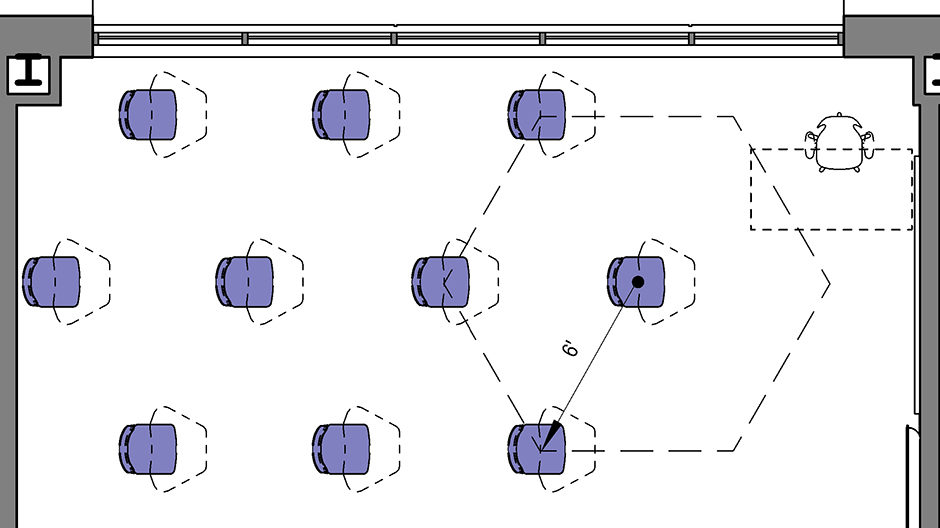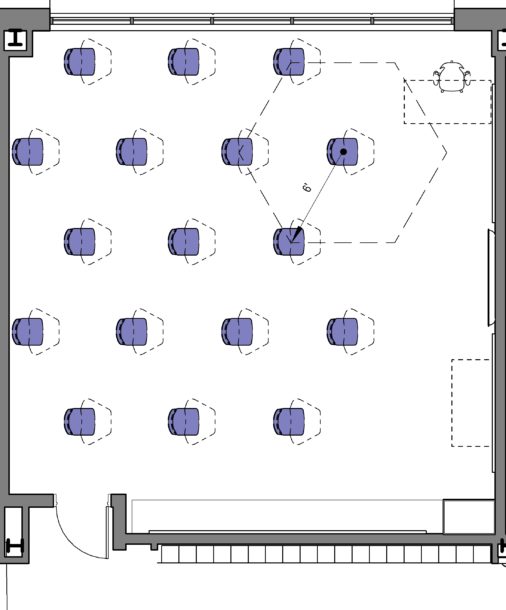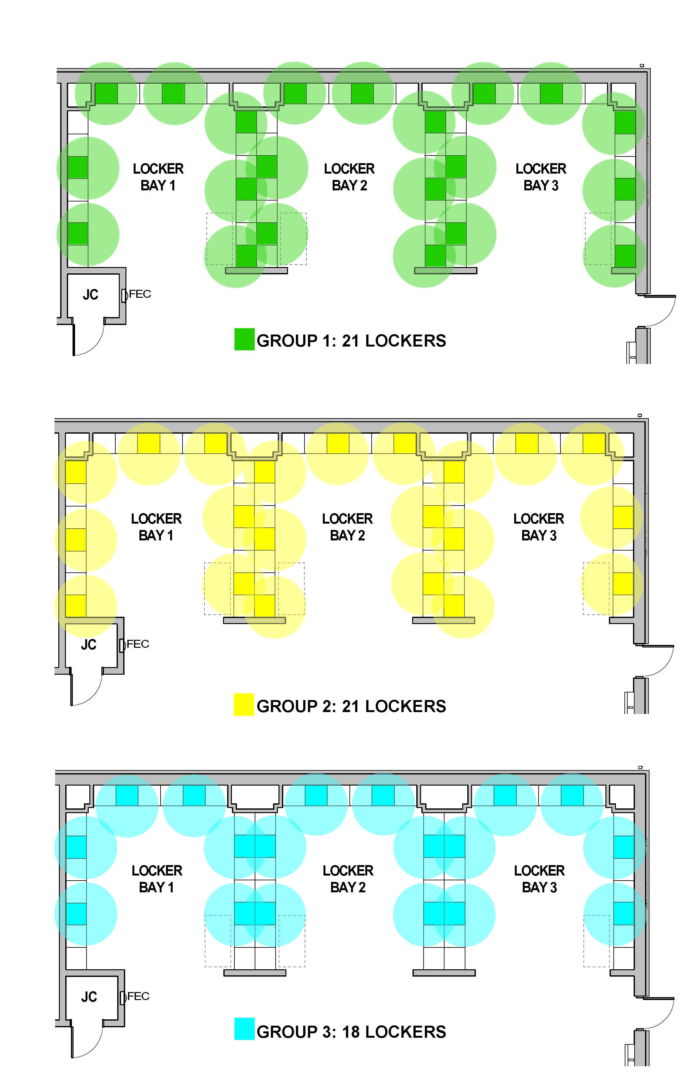Facility Strategies for Heightened Pathogen Awareness

Life in classrooms across the county has been disrupted by COVID-19. This has introduced the need for educational institutions to protect students and staff from potential environmental pathogens. There will undoubtedly be treatments and vaccines for the current COVID strains, but the awareness of the potential dangers of novel viruses, bacteria, and molds is likely to be a part of the new normal. This paper is a summary of some strategies that various institutions are implementing.
Teaching Strategies
Social Distancing
Maintaining a six-foot separation by reducing class sizes looks like the sketch below which cuts most class sizes from 25 students to 14 or 16.

Fewer students in classrooms / on campus
Whether this gets accomplished by alternate day attendance or split sessions, augmented by internet-based learning, the role of instructors will likely change.
Distance Learning
In the alternate day strategy, instructors may be able to present information much as they always have, except that one-half of their students will be there in person and the other half will be tied in electronically. This will demand updated IT systems (cameras, computers, smart boards, etc.) as well as access to laptops and internet for all students.
Curriculum
There are clearly some course offerings that will change. Hands-on laboratory classes may evolve to become digitally based. Visual and performing arts and athletics will become small group oriented.
Facility Upgrades
HVAC Upgrades
There are several adjustments that can be made to most currently used HVAC systems. If coupled with energy efficiency modifications, it is arguable that these will pay for themselves over a reasonable planning period.
Upgrade Filtration – Switching to HEPA filtration (MERV standards)
Adjusting Humidity Set Points – Viruses are stressed by humidity levels above 40%. Air can go all the way to 60% before mold becomes a risk.
Increasing Outside Air - This change will increase the amount of outside air that has to be conditioned, but the operating impact for some central systems can be offset by heat recovery equipment. Balancing positive and negative air pressures must be engineered.
Building Pressure Balance Charge – Positive or Negative
Ozone Units
Adding UV Light Disinfection - Nearly any air handler that utilizes heating and cooling coils can be fitted with an Ultra Violet light unit to disinfect air being delivered to any space served by the unit.
For additional information about HVAC systems, check out these insights from one of our colleagues at Barton Associates.
Door Hardware
Hands-free circulation in common areas offers opportunity to reduce touches and transmission.
Automatic Building Entrances – It is reasonably easy to equip main entrances with automatic openers and closers.
Foot Operated or Paddle Latch Sets – Either foot or elbow activated hardware can replace standard door levers or knobs. Existing door hardware can be used with simple hold-open devices as well.
Common Areas
Here are several strategies for making toilet rooms, dining areas and locker rooms safer.

Locker Room Sequenced-Use Strategy
Toilet Rooms
- Replacing room entry doors with vision screens to eliminate one significant source of transmission
- Replacing faucets and flush valves with automatic controls
- Utilizing warm air hand dryers in lieu of paper towels
Dining Areas
- Reducing occupancy counts and extending hours of operation
- Marking off social distancing on tables
- One-way circulation within the dining area
Student and Phys Ed Lockers
Since controlling social distancing and disinfecting the metal surfaces is difficult, simply eliminating the use of lockers or allowing more time to access lockers in sequenced, smaller groups may be necessary.
Facility Maintenance
Disinfection – Clearly, an increased burden falls to building maintenance, although participation from professors and students may be necessary when it comes to disinfecting surfaces. One process that shows much potential involves the use of industrial foggers which can disinfect an entire classroom in as little as 30 minutes. Common areas require almost constant attention.
Eliminating Carpet – Some buildings, having reached a point where they would normally replace carpet as part of capital maintenance, are opting to replace the carpet with resilient flooring. Those retaining the carpet are ramping up their cleaning schedule. Disinfecting carpet is tricky, since the fibers retain odors which are not well tolerated by occupants.

